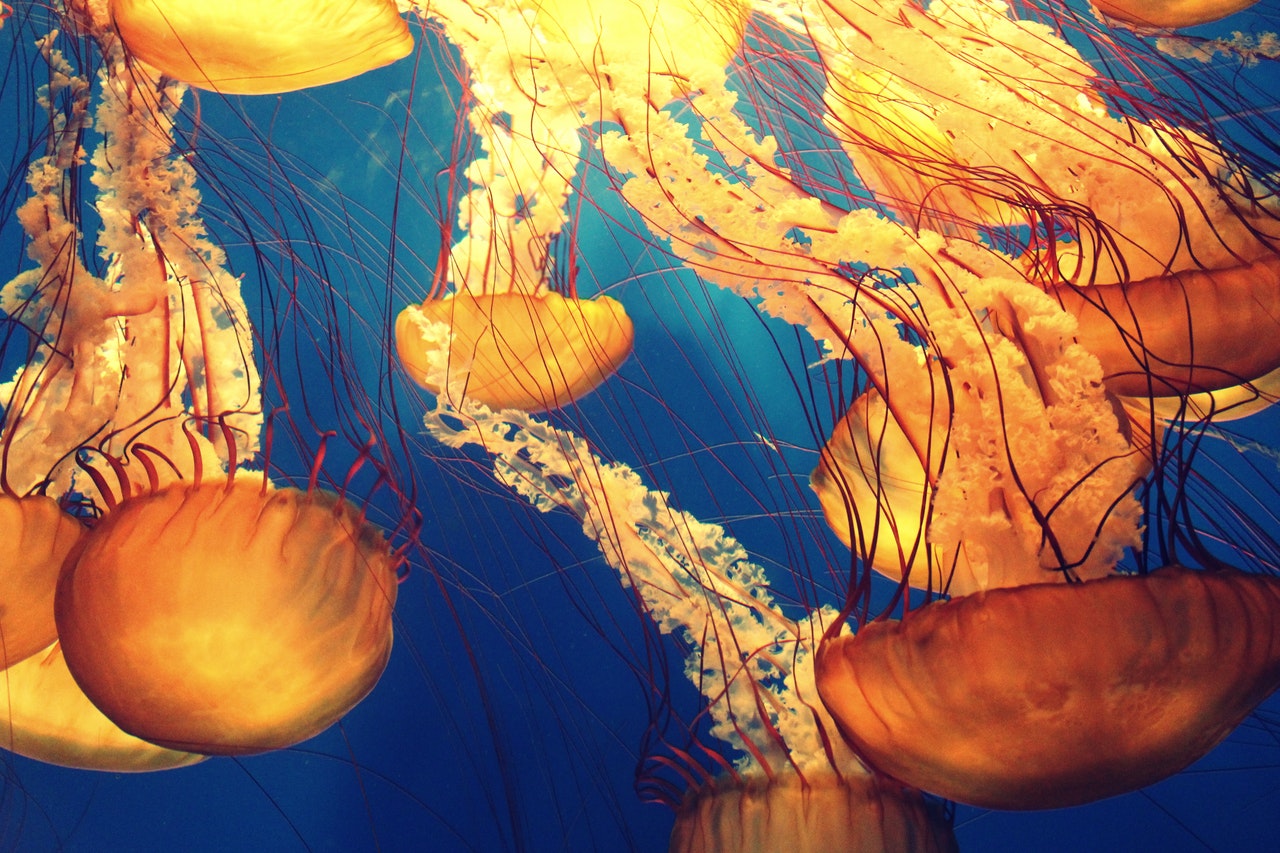
I learned this today. Jellyfish don’t have a brain. They also don’t have a stomach, lungs, or a heart. They just have two separate nervous systems.
Jellyfish are not fish. They are the medusa-phase of certain gelatinous members of the subphylum Medusozoa. They are in the group of sea creatures called cnidaria. This also contains coral and sea anemones. It contains any sea creature that has specialized cells for capturing prey and are a jelly substance between two layers of cells.
Jellyfish are made up of 95% water that is sandwiched between an outer layer that is only a few cells thick. They have long tentacles hanging below them that have nematocysts on them. These are stinging cells and they inject venom when they come into contact with something. Jellyfish are probably over 750 million years old, but it is hard to tell because they don’t leave many fossils.
So, how do they survive if they don’t have a brain? They have two nervous systems. One operates swimming and the other takes care of everything else.
Jellyfish swim by rapidly expanding and contracting their bell-shaped bodies. This allows them to push the water behind them, creating a vortex. This vortex refills the bell with water and pushes the jellyfish forward. It is an incredibly economical way of swimming that saves the jellyfish a lot of energy. This vortex can also suck prey into the jellyfish’s mouth.
Without a brain, we wouldn’t be able to do anything. Our brain controls every action that our body does. It is hard to fathom how jellyfish do what they do without a brain, but they have adapted to not need one. They can detect touch, temperature, and salinity. They have receptors on their tentacles and on the edges of their bell. These detectors can trigger the bell to start swimming away if they detect a low temperature or if they swim into something.
They don’t need a brain to regulate their stomach, because they don’t have one. They stun or kill food with the nematocysts on their tentacles. When the tentacle detects food, it sends an electrical signal to make so that it bends and brings the food to the mouth. After that they have a very simple digestive system. Nutrients from the food they eat diffuse into their body.
They don’t need a brain to regulate their lungs because they don’t have any. Their skin is so thin, only about two layers of cells, that they can absorb oxygen directly through it. The oxygen diffuses out of the water, directly into the jellyfish.
They don’t need a brain to work their heart because they don’t have one. Their whole body is like a sponge that just absorbs nutrients and oxygen. That is all that they need.
They don’t need a brain to work out where they are going. They reflexively move away from cold water, and they float on currents, fishing for food with their tentacles. They also don’t need a brain to know which way is up and which way is down. They have a tiny organ called a statocyst. It is a round organ with sensory neurons all around the inside of it. There is a mineral in the middle that is free to move. Gravity pulls the mineral down and the neurons fire when the mineral touches them. This pushes the jellyfish to swim the other way, up.
Some jellyfish also have eyes. These eyes can detect basic amounts of light. Each eye is connected to a bundle of nerves and it has opsins, proteins that can detect light. This would allow the jellyfish to move away from dark areas and into the light. Signals from the eyes enter a ring of nerves around the edge of the jellyfish’s bell. The box jellyfish actually has eyes that are very similar to ours. They have a retina, cornea, and lens, although it is difficult to know what they can actually see. They appear to use their eyes to look for prey and to find habitats. They do all of this without a brain. The nerve ring seems to integrate the information the eyes receive and then it creates an appropriate behavior. The problem is that nobody has any idea how it does it.
So, without a brain a jellyfish can move, eat, breathe, reproduce, catch prey, swim, tell up from down, and possibly even see. They do all of this by using two systems of nerves. They manage to mix all of the information from their various receptors and create an appropriate response, but nobody seems to know how. And this is what I learned today.
Photo by Oday Hazeem from Pexels
Sources
https://en.wikipedia.org/wiki/Statocyst
https://www.visitsealife.com/london/information/news/7-things-you-didn-t-know-about-jellyfish/
https://findanyanswer.com/how-do-jellyfish-maintain-balance
https://animals.howstuffworks.com/marine-life/jellyfish.htm
https://en.wikipedia.org/wiki/Jellyfish

